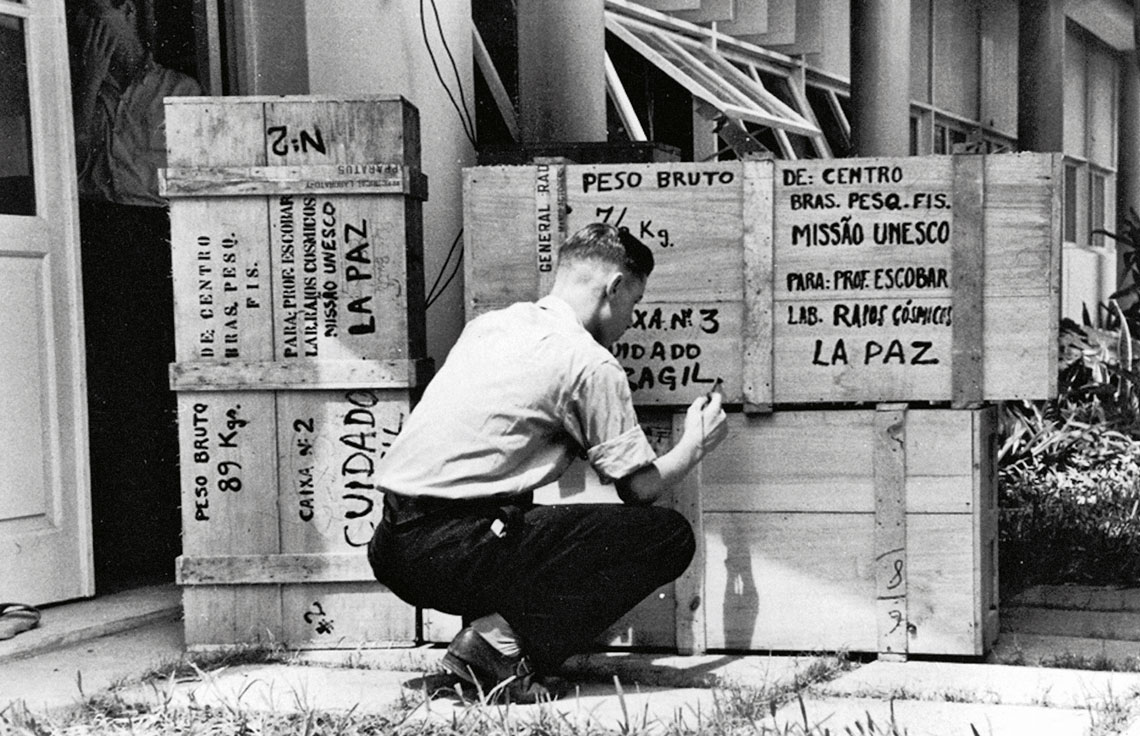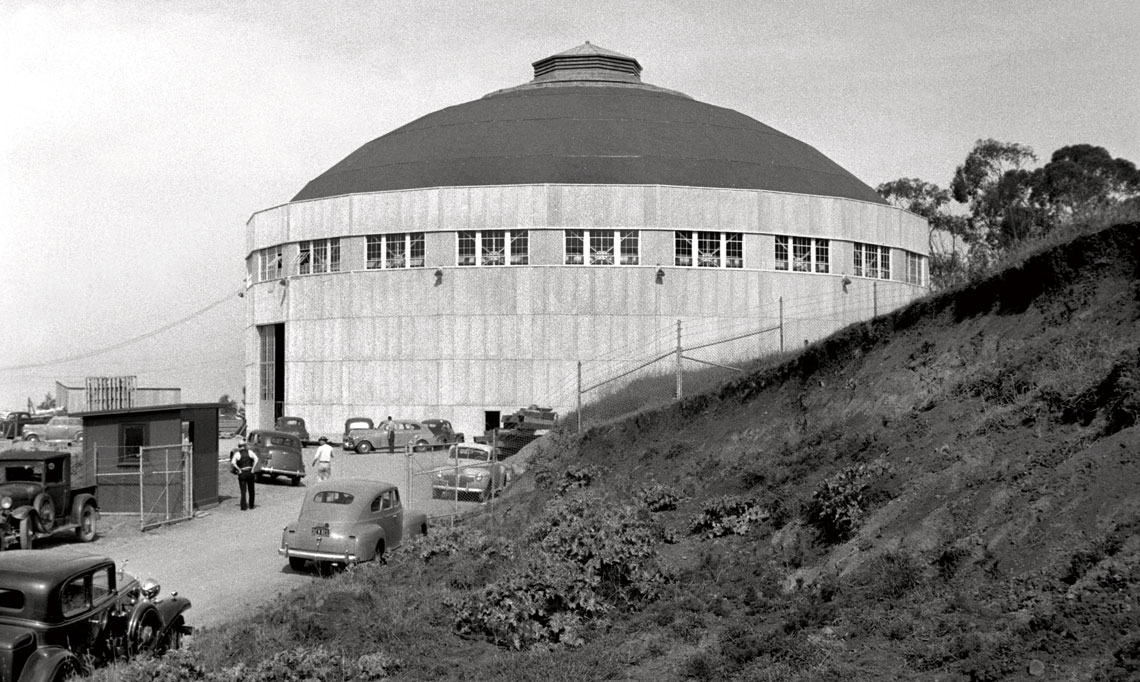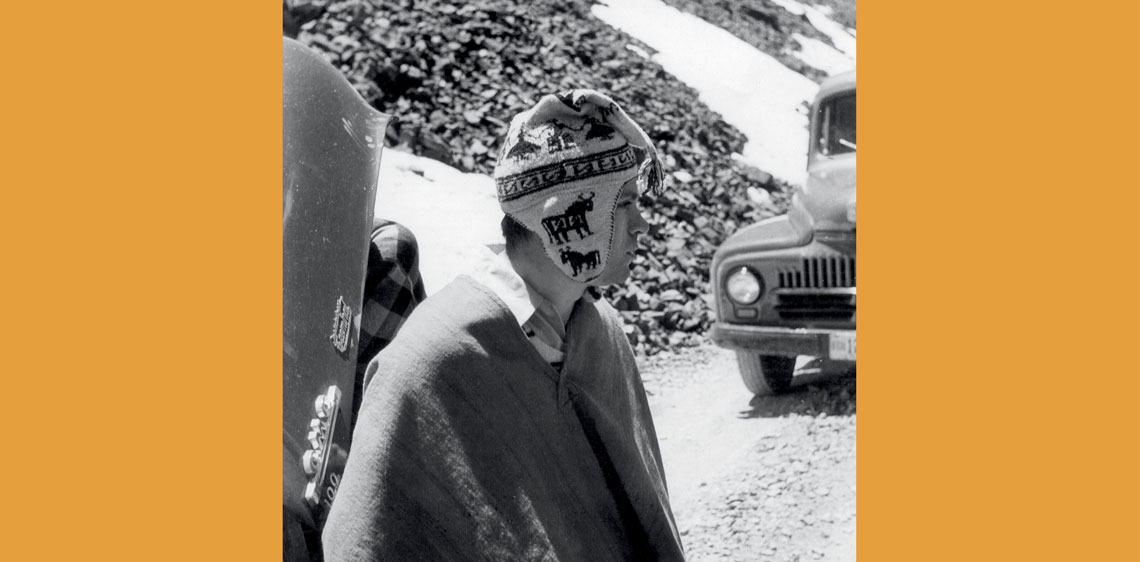Seventy-five years ago, when César Lattes played a decisive role in the discovery of the pion, you could count the number of subatomic particles known to science on one hand. At the time, the three basic constituents of the atom had been identified: electrons in 1897, protons in 1919, and neutrons in 1932. But our knowledge of the inside of the atom did not go much further than that.
At the end of 1934, Japanese physicist Hideki Yukawa (1907–1981) of Osaka University proposed a theory about what holds the atomic nucleus together. The integrity of the structure, which contains 99.9% of the mass of an atom, was a mystery. Formed by neutrons with no electrical charge and positive protons, the atomic nucleus should theoretically break apart due to electromagnetic force. Because they have the same charge, the protons should repel each other, tearing the nucleus apart.
Since this is not what happens, Yukawa hypothesized that there must be a particle with an intermediate mass between that of the proton and the electron that transmits a force (now known as the strong nuclear force) capable of negating the electromagnetism and ensuring the nucleus remains intact. According to the Japanese physicist’s calculations, this hypothetical particle, which would later be dubbed the meson, would have a mass between 200 and 300 times greater than the electron and 6 to 9 times smaller than the proton. “Yukawa’s ideas were largely forgotten for a few years,” says Antonio Augusto Passos Videira, a philosopher and science historian from Rio de Janeiro State University (UERJ) and collaborating researcher at the Brazilian Center for Physics Research (CBPF).
In 1936, American physicists Carl David Anderson (1905–1991) and Seth Neddermeyer (1907–1988), from the California Institute of Technology (Caltech), discovered a particle with roughly 200 times the mass of an electron while carrying out measurements of cosmic rays. It was originally called a mu meson, now known as the muon. Within a few years, however, other experiments showed that the muon was not related to the cohesion of the atomic nucleus and was not the meson predicted by the Japanese physicist.
The mystery only began to become clearer after the end of the Second World War, with the arrival on the scene of a scientist who was not from any of the traditional great international physics institutions: the young César Lattes in his early 20s. Between 1946 and 1948, the Brazilian was the first physicist to observe experimental evidence of trails produced by mesons both in nature in a shower of cosmic rays and “artificially” inside a particle accelerator. The particle identified by Lattes was originally called the pi meson. Later, it came to be known as the pion.
The pion was discovered after the use of a special photographic plate called nuclear emulsion began to replace Wilson cloud chambers in cosmic ray experiments that sought evidence of unstable subatomic particles. The new plates were capable of much more refined results than the previous technique. At the University of São Paulo (USP), Lattes had worked with cloud chambers, a closed container that uses supersaturated vapor to show the trails produced by electrically charged particles. The person who trained him was one of his mentors during the years he taught at USP, Italian physicist Giuseppe Occhialini (1907–1993). The trajectory of the particles appears in the form of lines in the image produced by this technique.

Boxes of equipment outside the CBPF headquarters, ready to be dispatched on an expedition to the Bolivian Andes in the early 1950sCBPF
In the mid-1940s, Lattes had the chance to see nuclear emulsions sent to Brazil by Occhialini, who at the time was working at the HH Wills Laboratory of the University of Bristol, UK, headed by Cecil Powell (1903–1969). The Brazilian was amazed by the possibilities of the new photographic plates, which were far more sensitive because they contained around ten times more silver salts (silver bromide). He later accepted an invitation to work on the other side of the Atlantic, leaving for Bristol in 1946.
It was at this point in history that the key moment in identifying the pion occurred. Upon arriving in Bristol, Lattes asked the Ilford laboratory — which manufactured nuclear emulsions alongside Kodak — to produce photographic plates with an additional element in its gelatin: boron. The introduction of boron increased the retention time of the images in the emulsions and extended the sensitivity period of the plates. The modification made it possible to see extremely fast and fleeting subatomic particles, such as pi mesons. When an ionized particle passes through an emulsion, the silver and bromine are separated. “This produces the traces we see on the plate,” explains Carola Dobrigkeit Chinellato, a physicist from the University of Campinas (UNICAMP) who did her PhD under Lattes’s supervision and studies cosmic rays.
Later in 1946, Occhialini went to the Pic du Midi, a 2,800-meter mountain in the French Pyrenees, to try to record particles originating from cosmic rays using nuclear emulsions, both with and without boron. The idea for this test is attributed to Lattes. Back in Bristol, the pair found evidence of two types of unstable particles in the boron plates: the pi meson, whose name came from the fact that it is the primary particle, the decay of which gives rise to the mu meson (muon). At the time, the muon was believed to be a meson (a nuclear particle with intermediate mass), but it was later determined that it is a lepton — a heavy relative of the electron. To verify the discovery made at Pic du Midi, Lattes proposed a repeat of the experiment at a much higher location on a mountain in the Bolivian Andes. “The number of cosmic particles on Chacaltaya, at 5,500 meters, is 100,000 times greater [than in Pic du Midi],” recalled Lattes in a 1995 interview published in the magazine Ciência Hoje.
The expedition to the Andean mountain left from Brazil, with Lattes taking the emulsions to the neighboring country, where he achieved his objective. A series of articles in the journal Nature describing the results from Pic du Midi and Chacaltaya confirmed the discovery of the pi meson based on the observation of cosmic rays. In 1947, Lattes went to the University of California, Berkeley.
At the institution’s 184-inch cyclotron particle accelerator, Lattes observed meson trails just 10 days after his arrival, something his hosts had been unable to do. The theorized artificial mesons, produced inside an accelerator rather than by cosmic rays, also became a reality. The discovery was attributed to Lattes and the American physicist Eugene Gardner (1913–1950), a student of American nuclear physicist Ernest Lawrence (1901–1958).
No Nobel prize
A question that always comes up when recounting Lattes’s career is whether the Brazilian should have won the 1950 Nobel Prize in Physics for his central role in the discovery of the pion. British scientist Cecil Powell, head of the Bristol group, received the honor alone. The Royal Swedish Academy of Sciences awarded him the Nobel Prize “for his development of the photographic method of studying nuclear processes and his discoveries regarding mesons made with this method.” The 1949 Nobel Prize in Physics was also awarded to a scientist studying these particles: Japanese theoretical physicist Hideki Yukawa, who predicted the existence of mesons.

The Berkeley cyclotron in the 1940s, where artificial mesons were observedLawrence Berkeley National Laboratory
Lattes was nominated for the prize seven times, but not in 1950, according to files published on the official Nobel website. In 1949 and 1952, he was nominated twice (by two different people). In 1951, 1953, and 1954, he was recommended once.
Occhialini, who taught Lattes at USP and worked alongside him in Bristol, is another name that was apparently overlooked by the Nobel Prize committee in 1950. With the Italian, however, there was an additional factor: he had already missed out on the 1948 Nobel Prize in Physics, which was awarded to British physicist Patrick Blackett of the University of Cambridge for his development of the cloud chamber method and discoveries in nuclear physics and cosmic radiation. Between 1936 and 1969, Occhialini was nominated for the Nobel Prize 32 times but never won.
“The Nobel Prize reinforces inequalities in research,” says Climério Paulo da Silva Neto, a science historian from the Federal University of Bahia (UFBA). “The honor tends to be given to scientists from renowned institutions or those who already have great public recognition.” The selection of famous names amplifies the impact of the award and feeds a cycle that promotes scientific notoriety for the Nobel Prize and its recipients. Silva Neto analyzed documents from the Swedish academy, including letters of recommendation for Lattes, and is working on a paper about the Brazilian physicist and the Nobel Prize.
For decades, there were rumors that the Danish physicist Niels Bohr (1885–1962) — who won the Nobel Prize in Physics in 1922 for his studies on atomic structure and radiation — had written a letter to the Swedish academy with harsh criticism of its choice not to honor Lattes. The letter was supposedly set to be published in 2012, half a century after Bohr’s death, but if it does exist, it has never come to light.
Soon after the Bristol group observed the pions, the renowned Danish physicist invited the Brazilian to Copenhagen to give a series of lectures about his work. The two appear to have gotten along well. However, according to Nobel’s public records, Bohr never even nominated Lattes for the prize. The person who recommended the Brazilian for the award three years in a row (in 1952, 1953, and 1954) was Croatian-Swiss chemist Leopold Ružička (1887–1976), winner of the Nobel Prize in Chemistry in 1939.
It is interesting to note that in the first 50 years of the Nobel Prize between 1901 and 1950, the physics prize was awarded to just one scientist alone 35 times, to a duo eight times, and to three people once. On six occasions, the honor was not awarded, due to the two world wars. Lattes repeated several times that he was glad he did not win the Nobel Prize, since if he had, he would have spent the rest of his life writing letters of recommendation for researchers. But on some occasions, he took a different stance. In a statement published in the Jornal da Unicamp newspaper in 2004, he said he was “robbed twice,” a reference to missing out on the prize for his work at Bristol and at Berkeley. In an interview with the magazine Superinteressante, published after he died in March 2005, Lattes said that the Nobel Prize should have gone to Occhialini and criticized the award: “These grand prizes don’t help science.”
Republish